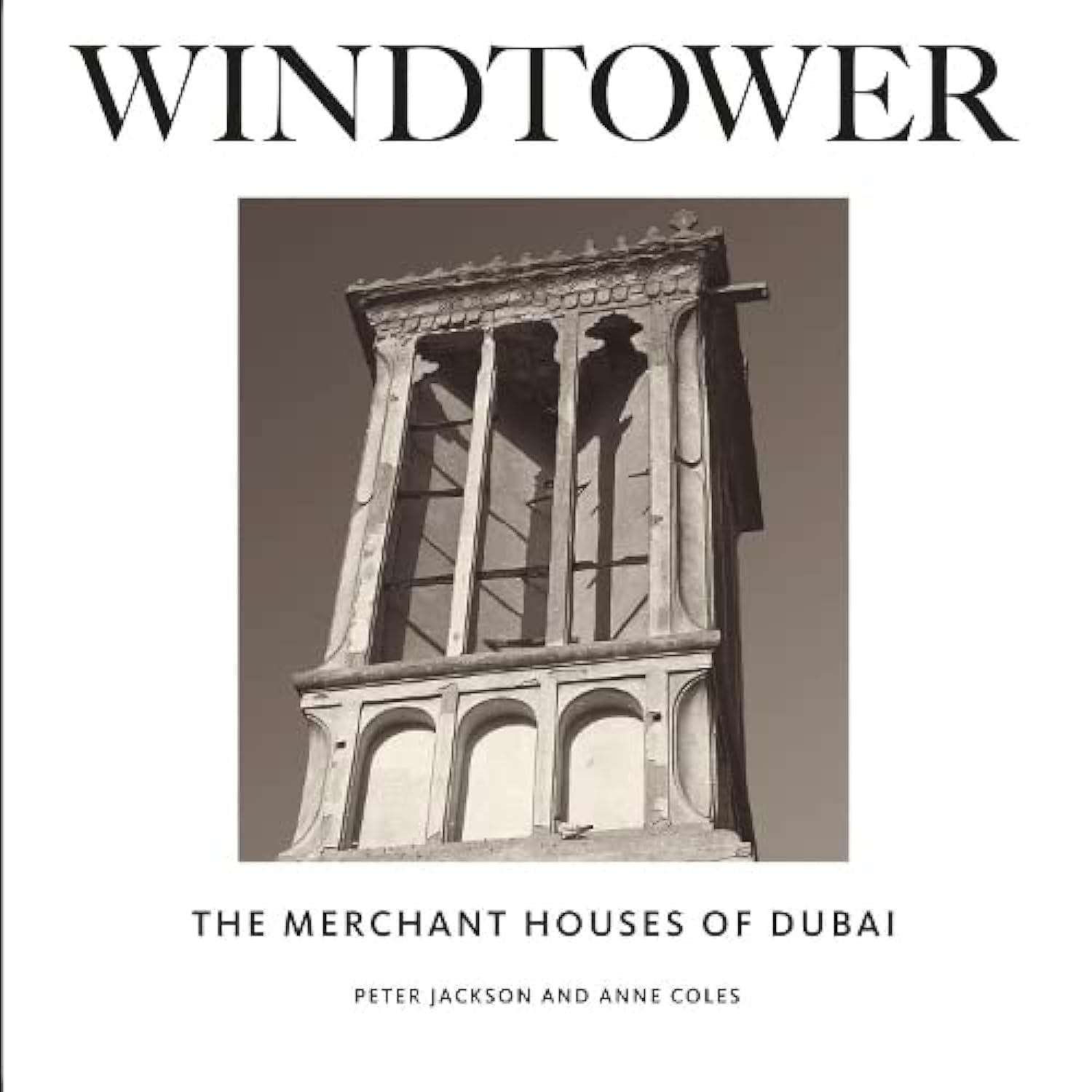
Dubai Neighborhood Paves Way for Urban Design Preservation
Reveiwed by Kyle Pakka
Windtower: The Merchant Houses of Dubai
Peter Jackson and Anne Coles. Medina Publishing, 2021.
In a book brimming with photos, architectural renderings and maps, Peter Jackson, an architect, and Anne Coles, a social geographer, examine the origins, flowering, decline and restoration of the famed Dubai wind towers, focusing on the homes in the historical al-Bastakiya neighborhood. Windtower is both a cautionary tale for cities that heedlessly obliterate their early beginnings in a rush to modernize and a road map on how cities can preserve and revitalize their historical hearts to make the past an essential part of their vibrant future.
Coles became aware of al-Bastakiya in 1969 while studying summer migration patterns in the emirates. Several years later, Jackson, a student architect, arrived in Dubai, and Coles asked him to make a drawing of a wind tower for the Dubai Museum. The single drawing evolved into a monograph, issued in 1975, that detailed the Bukhash family home in al-Bastakiya. When Jackson returned to Dubai in 2002, and with the encouragement of some neighborhood families, the authors produced a book in 2007 on the district, adding chapters on additional homes, the history of the neighborhood, construction techniques and an engineering analysis of how wind towers work.
This update of the 2007 edition adds a chapter on the pre-oil, trading and merchant history of Dubai, expands the engineering analysis to examine how the millennia-old science behind wind towers could spur contemporary applications and considers the legacy and impact of al-Bastakiya on local and regional urban design.
The story of how a traditional home-cooling system became a beloved cultural landmark begins with the arrival of merchant families, primarily from Persia, in the early 20th century. These merchant families brought the tradition of multidirectional wind towers with them and built a neighborhood of courtyard homes made of sea stone and gypsum, topped by wind towers (often ornate) and featuring glass fanlights, elaborate wooden doors and carved ventilation screens and balustrades.
The core of the book details seven significant wind-tower homes and the multigenerational families who built and lived in them. The families' stories reveal the vanished life of a close-knit community and reflect the social and commercial history of Dubai.
As its economy boomed in the 1970s, Dubai's gaze was fixed on the future, and old-fashioned reminders of its past fell into decline. Even as waves of demolition swept through in the 1980s and 1990s, nascent efforts argued for preservation. The tide turned in 2005, when a program was launched to reconstruct buildings and restore others in the al-Bastakiya and al-Shindagha neighborhoods.
The legacy of al-Bastakiya offers lessons for the renewal of historical neighborhoods. Drawing on the authors' decades of original research, Windtower is a love letter to the old heart of Dubai and a substantial achievement.

Windtower: The Merchant Houses of Dubai · Peter Jackson and Anne Coles. · Medina Publishing, 2021. Credit: GARY PARKER/ALAMY
“Windtowers came to represent power and wealth and also a policy a of openness to international commercial activity that has continued for 100 years.”
You may also be interested in...

Omani Author Zahran Alqasmi's Story About Life, Land and Honey
In his third novel, about a beekeeper living in Oman’s mountainous interior, local author Zahran Alqasmi grapples with a changing landscape around him.
The Ebb and Flow of History on the Zambezi River
In tracing the past six centuries of history, historian Malyn Hewitt captures the cyclical rise and fall of the river and its people.
Ancient Egyptians Still Have Things to Teach Us
Socrates and other Greek thinkers admired Egypt for its philosophical tradition. This new translation of a manuscript as old as the pyramids shows us why.